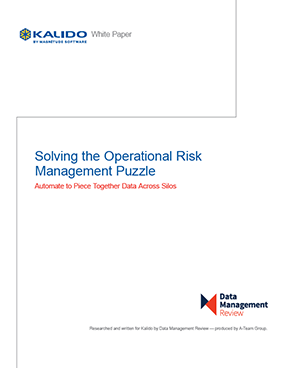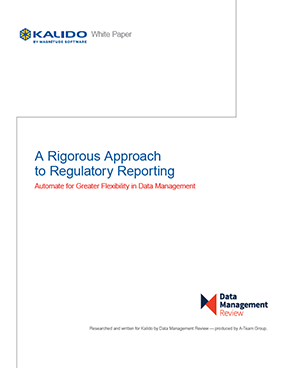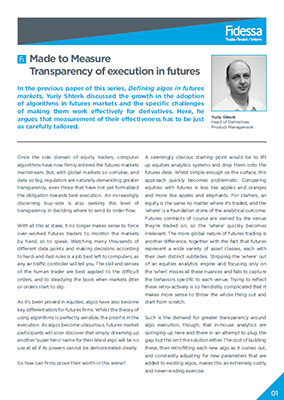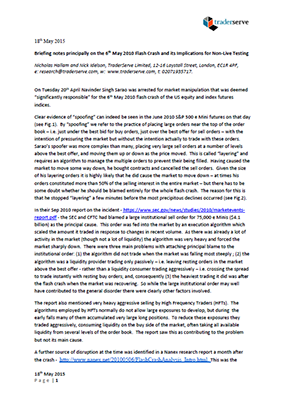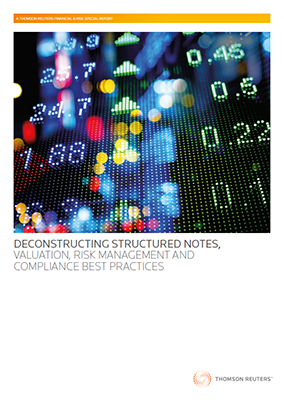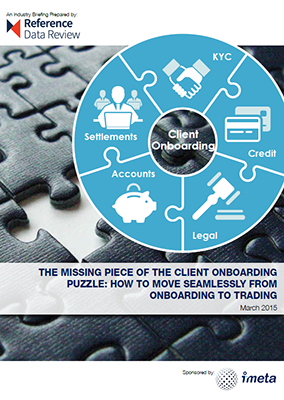RegTech Insight White Paper
Solving the Operational Risk Management Puzzle
Operational risk management has emerged as a major challenge as a slew of regulations affecting financial institutions across the board – from universal banks to insurance companies and their asset servicers – aims to boost transparency in order to mitigate systemic risk. The emerging regulations are emphasizing data governance and requiring firms to ‘show their...
A Rigorous Approach to Regulatory Reporting
The current battery of regulations is putting the onus on financial firms to review their data collection, integration and management systems that underlie their regulatory report processes today. For many firms – whether they are asset owners, fund managers, investment banks or custodians – the new emphasis on transparency is exposing gaps in their ability...
Shifting Sands: Tracking the Evolution of Electronic Execution
Brokers are facing more pressure than ever before to ‘get it right’ with respect to trade execution in an increasingly complex market landscape. The EU’s MiFID II and other regulations around the globe are placing electronic execution in the spotlight. To meet the more onerous rules, brokers will need to bolster their execution infrastructures significantly....
Made to Measure: Transparency of Execution in Futures
Brokers are facing more pressure than ever before to ‘get it right’ with respect to trade execution in an increasingly complex market landscape. The EU’s MiFID II and other regulations around the globe are placing electronic execution in the spotlight. To meet the more onerous rules, brokers will need to bolster their execution infrastructures significantly....
TraderServe Briefing Note – Flash Crash and Non-Live Testing
We all know about the Flash Crash of 2010, but rather than it being the fault of one individual, this paper presents analysis of the trading day and puts it down to a ‘perfect storm’ of four factors. And it suggests that the Flash Crash could have been avoided if MiFID II’s non-live testing requirements...
Do You Know How Regulation Is Impacting Structured Notes?
Deconstructing Structured Notes Valuation, Risk Management & Compliance Best Practices Sweeping new global financial regulations are changing the way financial firms perform valuations. Regulations call for robust and transparent asset and liability assessments, and for detailed insight into the real value and risk exposures in portfolios. In this report, Jayme Fagas, global head of valuations...
What’s Missing from your Client Onboarding Process?
There’s now a spotlight shining on the process of client onboarding due to regulations that are driving change in what is typically a fragmented and decentralised approach. While many firms recognise that getting their onboarding house in order is essential to achieving regulatory compliance and avoiding hefty penalties, addressing those functions in isolation is not...
Uncover the Biggest Compliance Challenges for International Businesses
When an international business has to satisfy compliance across the globe, it must pay careful attention to both the rules and the cultures in which it is operating. The financial crisis has increased regulatory scrutiny globally, with each country developing their own set of intense and sophisticated strategies and protocols for monitoring and policing economic...
How to Create an Agile Trading System
High speed, low latency trading connectivity is no longer enough to differentiate you from your competitors – so how do you add value to your trading systems? How can you create a trading platform that is: Flexible enough to accommodate the transaction lifecycle? Powerful enough to deliver the analytics for better informed trading decisions? Fast...
IFRS & AIFMD – Managing the Pricing and Transparency Paradigm
The International Financial Reporting Standards (IFRS) and the Alternative Investment Fund Managers Directive (AIFMD) present the market with a broad and complex range of obligations. In many cases these are the first set of common obligations that will impact Fund Managers, Hedge Funds, Asset Managers, Fund Administrators & Custodians all at the same time! Going...


